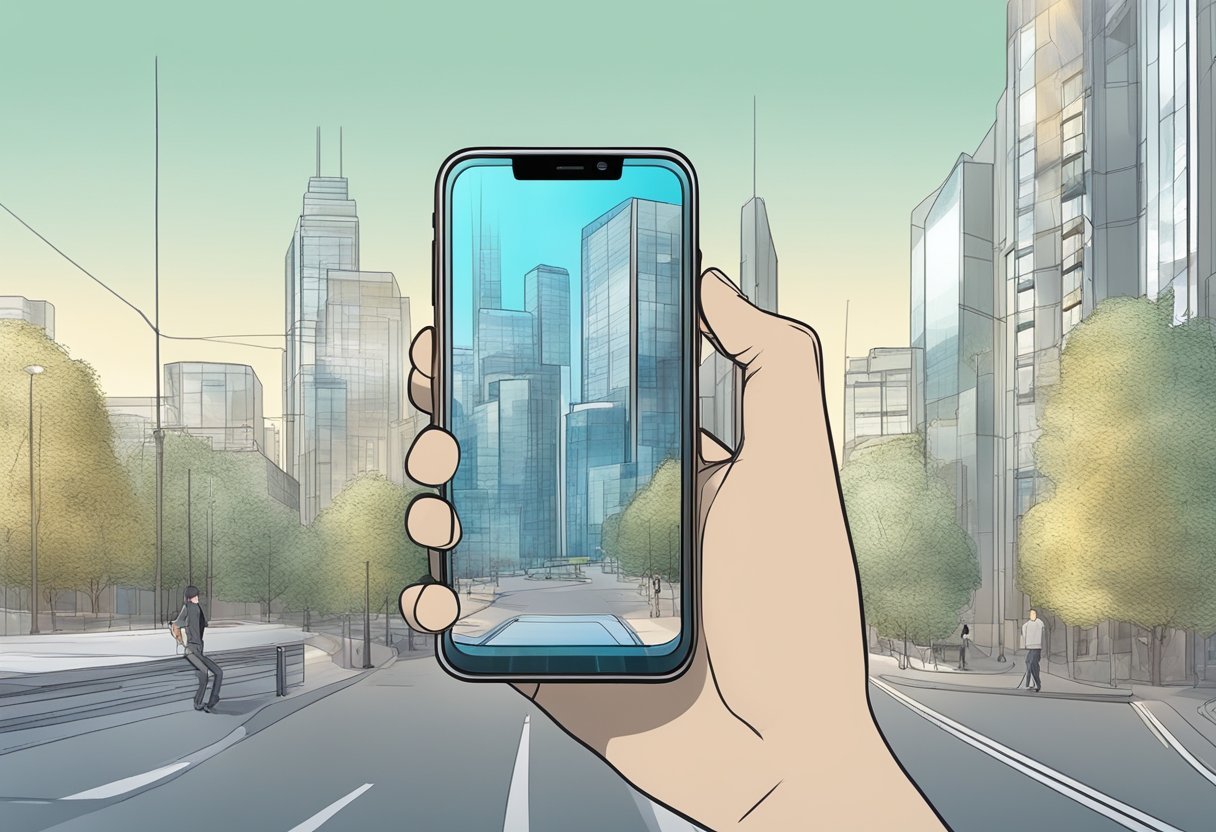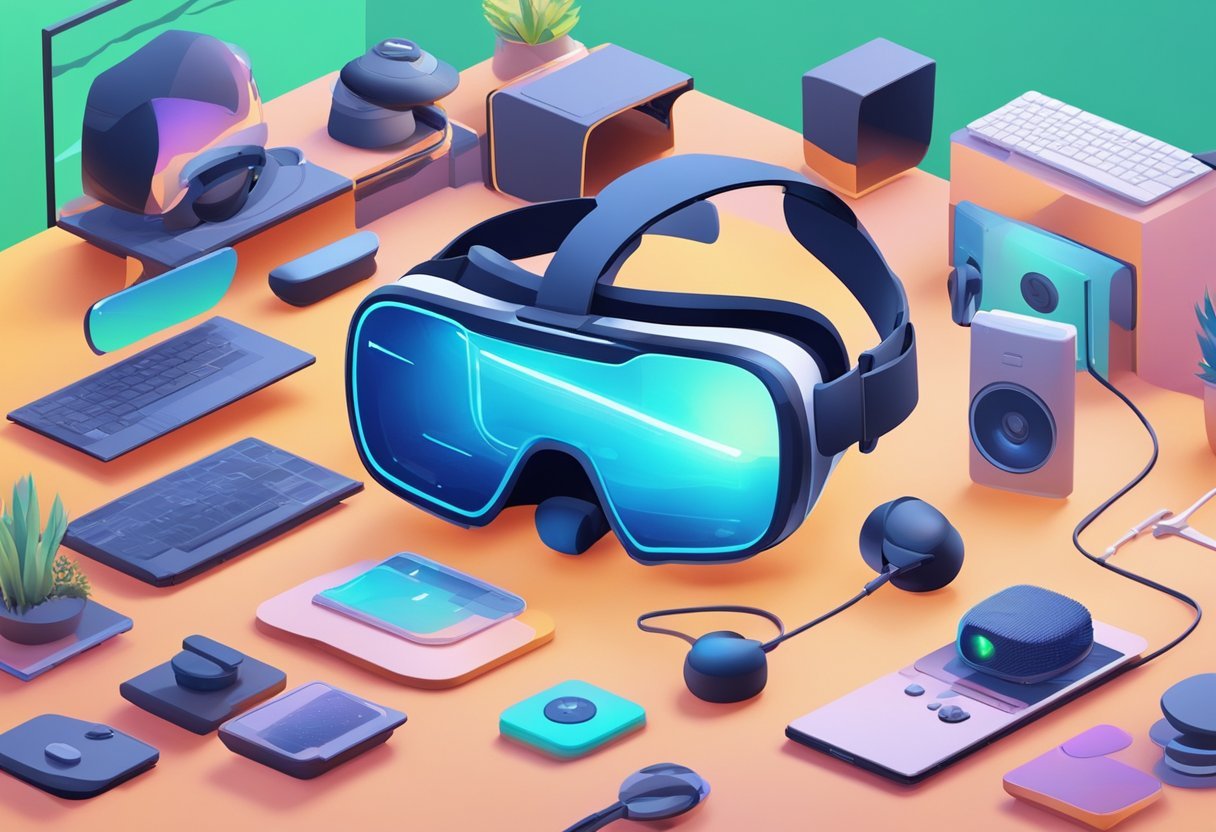Augmented reality (AR) is a technology that has been gaining popularity in recent years. It allows users to experience a real-world environment that has been enhanced with digital elements, such as images, sounds, and videos. AR can be used in a variety of applications, from gaming to education to marketing. Creating an AR experience may seem daunting, but with the right tools and knowledge, anyone can do it. In this blog post, I will share with you a step-by-step guide of how to create an augmented reality experience.
Understanding augmented reality is the first step to creating an AR experience. AR is different from virtual reality (VR) in that it overlays digital elements onto the real world, rather than creating a completely virtual environment. This means that AR experiences can be created using a mobile device, such as a smartphone or tablet, or with specialized AR glasses. AR experiences can be triggered by a variety of methods, such as scanning a QR code or using location-based technology.
Key Takeaways
- Augmented reality overlays digital elements onto the real world.
- Creating an AR experience involves setting up the project, designing content, and developing and testing the experience.
- Launching and marketing an AR experience effectively is crucial to its success.
Understanding Augmented Reality
Augmented Reality (AR) is a technology that enhances a user’s real-world environment by overlaying digital information onto it. AR is different from Virtual Reality (VR) because it does not replace the real world with a simulated one. Instead, AR adds virtual elements to the real world to create an immersive experience. AR can be experienced through various devices, such as smartphones, tablets, and smart glasses.
AR technology works by using sensors and cameras to track the user’s movements and position in the real world. The digital information is then overlaid onto the user’s view of the real world. This creates an illusion of the virtual elements being present in the real world.
Types of AR Experiences
There are two main types of AR experiences: marker-based and markerless. Marker-based AR uses a physical marker, such as a QR code or an image, to trigger the digital overlay. Markerless AR, on the other hand, uses the user’s environment to trigger the overlay.
Marker-based AR is more accurate and reliable because it uses a physical marker to trigger the overlay. Markerless AR, however, is more versatile because it does not require a physical marker.
AR experiences can also be categorized based on their level of immersion. There are three levels of immersion:
- Spatial AR: This type of AR overlays digital information onto the user’s view of the real world. The digital information is not anchored to any physical object, but it appears to be present in the real world.
- Object AR: This type of AR overlays digital information onto a physical object. The digital information is anchored to the physical object, and the user can interact with it.
- Full-Scale AR: This type of AR overlays digital information onto the entire environment. The digital information is anchored to the environment, and the user can interact with it.
AR experiences can be used in various industries, such as marketing, gaming, education, and entertainment. AR technology is constantly evolving, and it has the potential to revolutionize the way we interact with the world around us.
Creating Augmented Reality Experience

Tools needed to create an augmented reality experience:
- 3D Modeling Software: Tools like Blender, Maya, or 3ds Max to create and animate 3D models.
- AR Software Development Kits (SDKs): ARKit for iOS, ARCore for Android, or cross-platform solutions like Vuforia or Unity’s AR Foundation.
- Integrated Development Environment (IDE): Xcode for iOS, Android Studio for Android, or Unity for cross-platform development.
- Graphics Design Software: Adobe Photoshop or Illustrator for creating textures and other graphical elements.
- Image Recognition Tools: To create and manage target images that will trigger AR content.
- Audio Editing Software: For creating and editing sound effects or background music, such as Audacity or Adobe Audition.
- Video Editing Software: If your AR experience includes video content, tools like Adobe Premiere Pro or Final Cut Pro can be used.
- Testing Devices: A range of smartphones and tablets to test the AR experience across different screen sizes and operating systems.
- Analytics Tools: To track user engagement and behavior within your AR experience.
- Project Management and Collaboration Tools: Such as Trello, Asana, or JIRA to manage the development process and collaborate with team members.
How to Create an Augmented Reality Experience
Creating an augmented reality (AR) experience involves several steps, from conceptualization to deployment. Here’s a step-by-step guide:
- Conceptualize the AR Experience: Define what you want to achieve with your AR experience. Consider the target audience, the context in which it will be used, and what type of interaction or information you want to provide.
- Design the User Experience (UX): Sketch out the user journey and how users will interact with your AR experience. Create wireframes and storyboards to visualize the flow and key features.
- Select the AR Platform: Choose an AR development platform based on your target devices, required features, and development capabilities.
- Develop the Content: Create the 3D models, animations, and any other multimedia content that will be displayed in the AR experience.
- Build the AR Application: Using your chosen platform and tools, start coding the application. Integrate the content and implement the user interactions and AR features such as image recognition, object tracking, and spatial awareness.
- Test the Experience: Test your AR experience on multiple devices to ensure it works correctly and is well-optimized. Make adjustments based on feedback and performance.
- Deploy the Experience: Once testing is complete and you’re happy with the AR experience, deploy it to the appropriate app store or distribute it directly to users.
- Market Your AR Experience: Use various marketing strategies to promote your AR experience to your target audience.
- Gather User Feedback: After users have had a chance to try your AR experience, collect feedback to understand what works well and what could be improved.
- Iterate and Update: Use the feedback to make updates and improvements to your AR experience.
How to interact with AR
Augmented reality (AR) technology is becoming increasingly popular as it allows users to interact with the digital world in a more immersive and interactive way. There are several ways to create an AR experience, and in this section, we will explore 7 different methods.
- Marker-based AR: This method uses a physical marker, such as an image or QR code, to trigger the AR experience. When the camera detects the marker, it overlays digital content on top of it. This method is commonly used in advertising and marketing campaigns.
- Location-based AR: This method uses GPS and other location data to trigger the AR experience. For example, an AR app could overlay information about nearby landmarks or restaurants when the user is in a specific location.
- Projection-based AR: This method projects digital content onto real-world objects, creating an interactive experience. This method is often used in museums and art installations.
- Superimposition-based AR: This method overlays digital content on top of real-world objects, creating a mixed reality experience. This method is commonly used in gaming and entertainment.
- Recognition-based AR: This method uses image or object recognition technology to trigger the AR experience. When the camera detects a specific image or object, it overlays digital content on top of it. This method is commonly used in education and training.
- Markerless AR: This method does not require a physical marker to trigger the AR experience. Instead, it uses computer vision and other technologies to detect and track real-world objects and surfaces. This method is commonly used in industrial and manufacturing applications.
- Web-based AR: This method allows users to access AR experiences through their web browser, without the need for a dedicated app. This method is becoming increasingly popular as it allows for easy access to AR content.
Setting Up Your AR Project

Augmented Reality (AR) has become increasingly popular in recent years, and there are now many tools and platforms available to help developers create AR experiences. In this section, we will explore the steps involved in setting up your AR project, from choosing the right platform to creating your first AR experience.
Choosing the Right Platform
The first step in setting up your AR project is to choose the right platform. There are many platforms available, including ARKit for iOS devices, ARCore for Android devices, and Vuforia for both iOS and Android. Each platform has its own strengths and weaknesses, so it is important to choose the right platform for your project.
AR Development Tools and Software
Once you have chosen your platform, you will need to select the right AR development tools and software. There are many tools available, including Unity, Unreal Engine, and Vuforia Studio. Each tool has its own strengths and weaknesses, so it is important to choose the right tool for your project.
Creating Your First AR Experience
Once you have chosen your platform and development tools, it is time to create your first AR experience. This can be done by following the documentation provided by your chosen platform and development tools. It is important to test your AR experience thoroughly before releasing it to the public.
Setting up your AR project involves choosing the right platform, selecting the right AR development tools and software, and creating your first AR experience. By following these steps, you can create a successful AR project that will engage and delight your audience.
Designing AR Content

Creating augmented reality content requires a combination of creativity and technical skills. To ensure the content is engaging and interactive, designers must incorporate interactive elements and 3D objects that enhance the user experience. Video and audio can be used to create a more immersive experience.
Incorporating Interactive Elements
Interactive elements are essential in creating an engaging AR experience. Designers can use intera
ctive elements such as buttons, sliders, and menus to allow users to interact with the content. These elements can be used to provide additional information, change the perspective of the content, or trigger animations.
3D Objects and Illustrations
3D objects and illustrations are essential in creating a realistic AR experience. Designers can use 3D models to create realistic objects that users can interact with. Illustrations can also be used to create a more stylized experience.
Enhancing User Experience with Video and Audio
Video and audio can be used to enhance the user experience. Designers can use video to provide additional information or to create a more immersive experience. Audio can be used to provide sound effects or narration, which can add to the overall experience.
Designing AR content requires a combination of technical skills and creativity. Designers must incorporate interactive elements and 3D objects to create an engaging experience. Vdeo and audio can be used to create a more immersive experience. By following these guidelines, designers can create AR content that is both engaging and interactive.
Developing and Testing Your AR Experience
Writing Code for AR
Developers can use several programming languages to create AR experiences. JavaScript is a popular choice for AR development because of its versatility and ease of use. JavaScript libraries like A-Frame, AR.js, and Three.js provide developers with useful tools for creating AR experiences. When writing code for AR, developers should consider the specific features and tasks of the AR experience they want to create.
User Acceptance Testing (UAT)
User Acceptance Testing (UAT) is a crucial step in the development process of an AR experience. UAT allows developers to test the AR experience with real users and get feedback on the usability and functionality of the AR experience. During UAT, developers should pay attention to how users interact with the AR experience and make necessary adjustments based on user feedback.
Tracking and Improving Performance
Tracking and improving performance is an important aspect of developing an AR experience. Developers should track the performance of the AR experience to identify any issues that may affect the user experience. By tracking performance, developers can identify areas where the AR experience can be improved. Improving performance can involve optimizing the code, reducing the size of the AR assets, or improving the tracking accuracy.
Developing and testing an AR experience requires careful consideration of the specific features and tasks of the AR experience. Developers should use programming languages like JavaScript and libraries like A-Frame, AR.js, and Three.js to create the AR experience.
User Acceptance Testing (UAT) is a crucial step in the development process, and developers should pay attention to how users interact with the AR experience. Tracking and improving performance is also important to ensure a smooth and enjoyable user experience.
Launching and Marketing Your AR Experience
Augmented Reality (AR) is a powerful solution that can be used to entertain, educate, or solve problems. However, creating an AR experience is just the first step. To ensure that your AR experience is successful, you need to launch and market it effectively. In this section, we will discuss how to set goals and target audience, educational and marketing strategies, and measuring success and ROI.
Setting Goals and Target Audience
Before launching your AR experience, it is important to set clear goals. What do you want to achieve with your AR experience? Do you want to entertain, educate, or solve a problem? Once you have set your goals, you need to identify your target audience. Who is your AR experience designed for? What are their needs and interests? By identifying your target audience, you can tailor your AR experience to meet their needs and interests.
Educational and Marketing Strategies
Once you have set your goals and identified your target audience, you need to develop educational and marketing strategies. Your educational strategy should focus on how to use your AR experience. This could include tutorials, videos, or other educational materials. Your marketing strategy should focus on how to promote your AR experience. This could include social media, email marketing, or other promotional materials.
Measuring Success and ROI
Finally, you need to measure the success of your AR experience and calculate your ROI. To measure success, you should track metrics such as engagement, retention, and conversion rates. To calculate ROI, you should compare the cost of creating and launching your AR experience to the revenue generated from purchases or other actions taken by users. By measuring success and ROI, you can identify areas for improvement and make data-driven decisions to improve your AR experience.
Launching and marketing your AR experience is essential to its success. By setting clear goals and identifying your target audience, developing educational and marketing strategies, and measuring success and ROI, you can create a successful AR experience that entertains, educates, or solves a problem.
Frequently Asked Questions

What tools are needed for a beginner to develop an augmented reality app?
To develop an augmented reality app, beginners will need a few essential tools: a computer with a powerful processor, at least 16GB of RAM, and a solid-state drive (SSD) to reduce lag during rendering and processing. In addition, beginners will need an AR software development kit (SDK) which provides all the necessary tools and resources to create AR apps. Some popular AR SDKs include Vuforia, ARCore, and ARKit.
Which platforms are best for creating AR/VR applications?
There are several platforms available for creating AR/VR applications, including Unity, Unreal Engine, and Godot. Unity is the most popular platform for creating AR/VR applications due to its ease of use and robust features. Unreal Engine is another popular platform that provides advanced tools for creating high-quality AR/VR experiences.
Can I create augmented reality content without spending money?
Yes, there are some free tools available for creating augmented reality content. One such tool is AR.js, which is an open-source JavaScript library for creating AR experiences that work on any device with a web browser. Another option is to use Spark AR Studio, a free tool for creating AR filters for Instagram and Facebook.
What steps are involved in making an AR app from scratch?
To create an AR app from scratch, the following steps are involved:
- Define your goals and objectives
- Choose an AR SDK and platform
- Design your AR experience
- Develop and test your AR app
- Publish your AR app to the app store
How can I integrate 3D models into my augmented reality project?
To integrate 3D models into an augmented reality project, you will need to use a 3D modeling software such as Blender or Maya to create the 3D models. Once you have created the 3D models, you can import them into your AR development environment and use them to create your AR experience.
What are the basics of designing an augmented reality website?
Designing an augmented reality website involves creating a user-friendly interface and integrating AR elements into the website. To design an AR website, you will need to use an AR SDK and platform that supports web development, such as AR.js or A-Frame. Once you have chosen your platform, you can design your AR elements and integrate them into your website using HTML and JavaScript.




